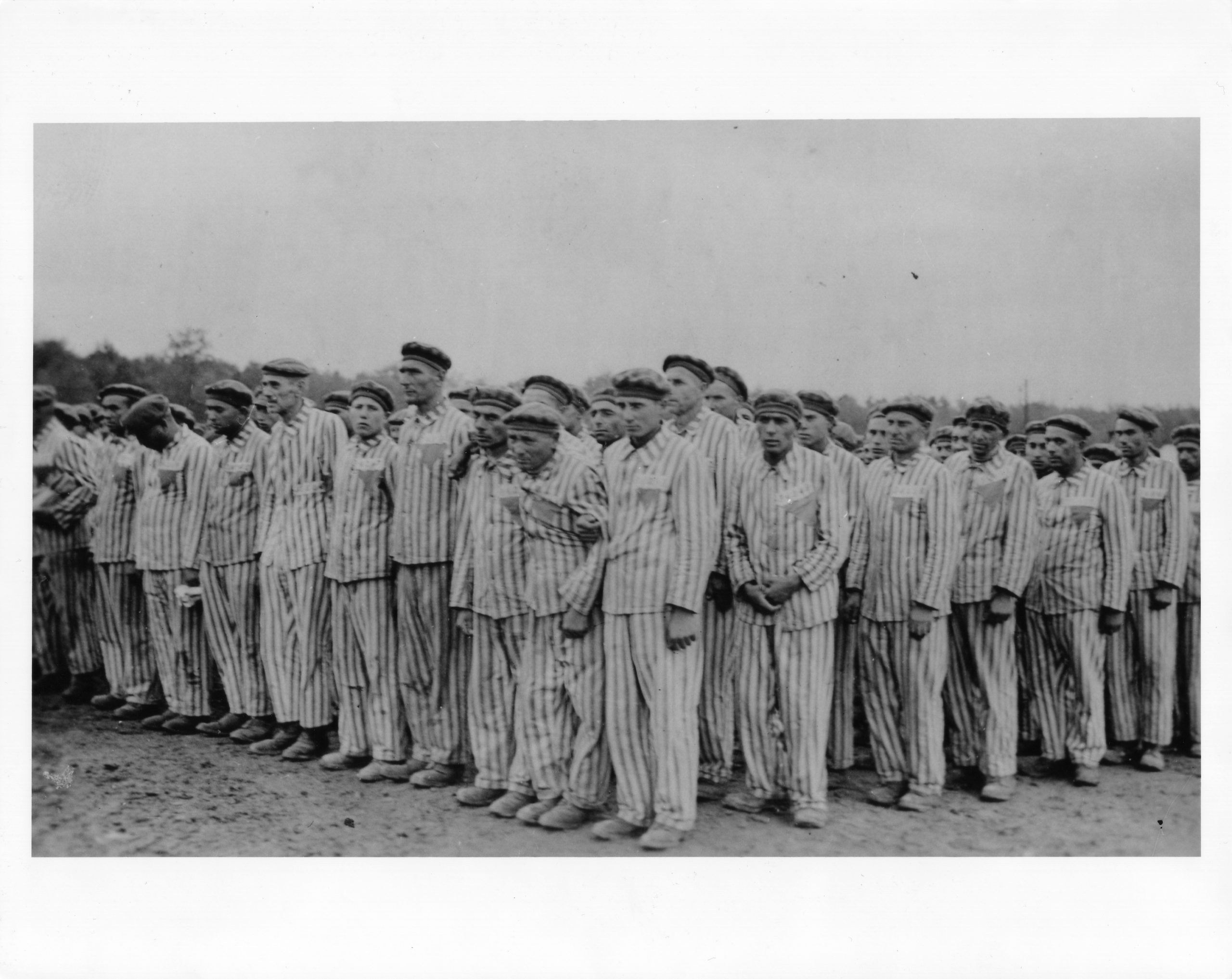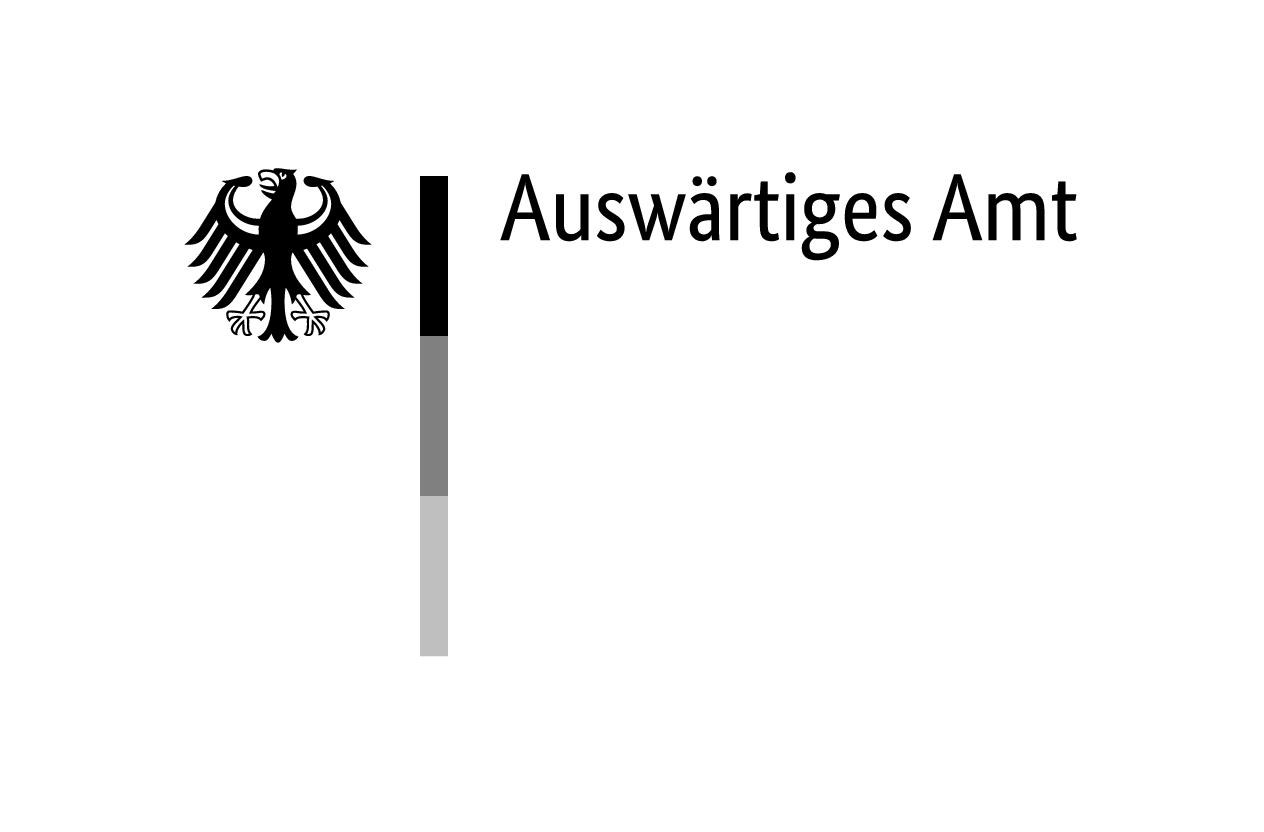Buchenwald concentration camp, located near Weimar in central Germany, was one of the largest concentration camps in the German Reich. Between 1937 and 1945, the National Socialists sent 3,500 to 4,000 Sinti and Roma to the camp and its satellite camps.
Buchenwald Concentration Camp 1937–1945
Buchenwald was established as a camp for men in July 1937 on the Ettersberg near Weimar. The first prisoners were political opponents and alleged ‘professional criminals’ who had been transferred from the Sachsenhausen concentration camp and the dissolved concentration camps at Lichtenburg, Bad Sulza and Sachsenburg. They were forced to build the camp on the Ettersberg hillside. As a result, hard physical labour in the nearby quarry and on construction sites dominated everyday life in the camp during the early years.
As part of the ‘Aktion Arbeitsscheu Reich’ [Operation Workshy] in 1938, the Secret State Police (Gestapo) and the Criminal Police (Kripo) sent people labelled ‘asocial’ and ‘professional criminals’ to the camp; among them were Sinti and Roma as well as Jewish men. Following the November pogroms of 1938, almost 10,000 Jews were sent to the concentration camp on the Ettersberg – the first time Jews were incarcerated in concentration camps in large numbers.
The outbreak of World War II in September 1939 had a major impact on the number of inmates and the composition of the inmate population. Numbers rose as a result of large transports, including those from the Dachau concentration camp. The overcrowding of the camp in the autumn and winter of 1939/40 led to the first mass deaths in Buchenwald. In the years that followed, people from all countries occupied by Germany were sent to the Ettersberg.
Between 1941 and 1943/44, the largest mass killing in the history of the camp took place. More than 8,000 Soviet prisoners of war, including alleged political commissars of the Red Army, members of the intelligentsia and Jews, were deliberately murdered by the SS in stables near the camp that had been repurposed for the systematic shooting of prisoners.
Until 1942, the SS (Schutzstaffel) assigned inmates mainly to work details in the camp section or in surrounding villages. With the change in the function of concentration camps from 1942/43 onwards, satellite camps were established throughout central Germany. The inmates were now also forced to perform forced labour for the armaments industry. For this purpose, the Gustloff-Werk II weapons factory was built near the camp.
From 1943 onwards, the SS transported hundreds of thousands of people to Buchenwald using a specially built railway line and from there to the 140 satellite camps that were part of the Buchenwald camp complex. Inmates from Buchenwald were also deported to camps in the German-occupied East to be killed. From September 1944, the camp’s administrative area also included over 28,000 female inmates who were subject to forced labour in satellite camps.
As the Allies advanced, the SS attempted to clear the camp. They sent more than 27,000 people on death marches. The Buchenwald main camp was liberated by the US Army on 11 April 1945. Between 1937 and 1945, a total of almost 280,000 people of all ages and from over 60 nations were imprisoned in Buchenwald and its satellite camps. 56,000 inmates died of malnutrition, lack of medical care, violence by the guards, medical experiments or the effects of the conditions in which they were held, many of them shortly after liberation.
First Arrivals of Sinti and Roma in 1938
The first Sinti and Roma were sent to Buchenwald during and after the ‘Aktion Arbeitsscheu Reich’ in 1938. So far, 100 people have been identified by name. They were labelled ‘Zigeuner’ in the camp documents and, in some cases, on the transport lists, and were registered under the prisoner group ‘ASR’.
We only know one Sinto by name who was incarcerated before that. This was Josef Köhler (1908–unknown), arrested in Kassel on 23 April 1938 as part of the ‘April Action’ carried out by the Gestapo and sent to Buchenwald on 21 May. He remained in Buchenwald until 1944 and was then transferred to the Flossenbürg concentration camp.1Arolsen Archives, 1.1.5.3., Personal file Köhler, Josef, born 8 June 1908 / ITS Digital Archive. Most of those incarcerated in 1938, at least 87 Sinti and Roma, were transported to Buchenwald on the orders of the criminal police in June. Twelve more people were registered in July and August.
Those men came mainly from central Germany and Silesia; just under 20 of them came from Thuringia. One of the youngest was Kurt Ansin {1921–1984), born in Bretleben in 1921. Together with his father, who died shortly after arriving in Buchenwald, he had been arrested by the criminal police in the detention camp in Magdeburg. He was released in 1939, but in 1944 he was among those returned to Buchenwald after having been deported to the Auschwitz-Birkenau concentration and extermination camp.
Since no work details were recorded in the camp documents for this period, it is not possible to say anything about the forced labour these inmates had to perform. There are also no known reports from survivors of this group of inmates. Since Buchenwald was still under construction at that time, it can be assumed that they were assigned to work details for the construction of the camp, for example in the quarry.
Of the 100 Sinti and Roma identified by name, 29 were released in the following months; another 43 were transferred to other concentration camps from 1940 onwards, for example to Mauthausen. A small number remained in Buchenwald. Eight of them did not survive the following months. Among these was Otto Schmidt, born in Luckenwalde in 1918, who was also arrested in the detention camp in Magdeburg. He was abused in a medical experiment involving typhus and murdered on 20 November 1942, the day the experiment ended.2Stein, Konzentrationslager Buchenwald, 74 f.
At the beginning of 1939, the Sinti and Roma remaining in the camp were ‘racially’ assessed by Robert Ritter (1901–1951) and Eva Justin (1909–1966), of the Racial Hygiene Research Unit.3Federal Archives Berlin (BArch), R 165/239, p. 41, Eva Justin to Manfred Betz, 6 February 1939.
Roma from Burgenland in 1939
The mass transports that began in September 1939 brought an even larger group of Sinti and Roma to the camp. The SS transferred at least 5704Buchenwald Memorial, database ‚ASR_Sinti und Roma‘, as of May 2025. Roma from the Austrian Burgenland region from Dachau to Buchenwald on 27 September 1939; they were housed as a group in Blocks 14 and 15. Political prisoner Alfred Hönemann (1916–1999) was appointed block elder in Block 14. After World War II, he wrote the most detailed report on the group of Burgenland Roma in Buchenwald.5Buchenwald Archive, BwA-K-31/1059/000-0001, Alfred Hönemann: Das Leben und Sterben der Zigeuner in Buchenwald, o. D. [The Life and Death of Gypsies in Buchenwald, undated].
Some of this group are depicted in photographs taken for an album that the first camp commander, Karl Otto Koch (1897–1945), had compiled for publicity purposes. Four of the photographs show the inmates on the roll call square shortly after their arrival in Buchenwald. It is possible to identify three of the people in the picture by their prisoner numbers: Paul Baranyai (1917–1940) with the number 34003, who died in Buchenwald, Stefan Horvath (1920–unknown) with number 34348, transferred to Mauthausen, and Johann Horvath (1920–unknown) with number 34123, transferred to Neuengamme.

Stehappell von Roma aus dem Burgenland im Konzentrationslager Buchenwald, Herbst 1939. Die Männer waren aus dem Zwangslager Lackenbach in das Konzentrationslager Dachau und von dort nach Buchenwald deportiert worden, wo sie am 27. September 1939 eintrafen. Im Burgenland hatte es früh eine radikale Verfolgung gegenüber der Minderheit gegeben. Tausende wurden in Zwangslagern und Konzentrationslagern, vor allem aber im Getto Litzmannstadt, im Vernichtungslager Kulmhof und im Konzentrations- und Vernichtungslager Auschwitz-Birkenau ermordet. Von den einst 11 000 in Österreich lebenden Angehörigen der Minderheit wurden etwa 9 000 ermordet – die meisten von ihnen waren Rom:nja aus dem Burgenland.
Die Fotografie wurde vermutlich vom Erkennungsdienst des Lagers aufgenommen. Das Original trägt die Beschriftung „Dachauer Zugänge Herbst 1939“.
Fotograf: unbekannt (Angehöriger des Erkennungsdienstes des Konzentrationslagers Buchenwald)
Sammlung Gedenkstätte Buchenwald, Bildnummer 006.002
As a result of the overcrowding in Buchenwald and the resulting catastrophic living conditions, at least 237 Roma from Burgenland died in the autumn of 1939 and winter of 1940, with another 17 perishing in the following months and years. This meant that the mortality rate for this group was extremely high at around 41 per cent. The reasons cannot be reconstructed in detail, but they clearly lie in the general situation in the camp. In addition, it can be demonstrated that some of the Roma who died had been assigned to the particularly exhausting work details Steinbruch (quarry), Steineträger II (stone carriers) and Lagerstraße (camp road).
From autumn 1940, the SS transferred most of the Burgenland Roma to other concentration camps; the majority arrived in Mauthausen in the spring and summer of 1941, where most of them were forced to perform hard labour in the Gusen satellite camp. Only a few remained in Buchenwald. Among them was Alexander Karoly (1923–unknown). In Buchenwald, he was forced to perform hard labour in the tailoring, shaft (Schachtkommando I) and quarry details, among others, before being transferred to the Halle satellite camp in the summer of 1944 and finally to the Meuselwitz satellite camp in December. Shortly before liberation, he returned to the main camp, where he was liberated in April 1945. In 1950, he testified at the Augsburg trial of Ilse Koch (1906–1967), the wife of former camp commander Karl Otto Koch.6Jardim, Ilse Koch on Trial, 242. Crimes against Sinti and Roma were not addressed in the trial.
Further Arrivals up to 1944
So far, we only know of individual cases in which Sinti and Roma were sent to Buchenwald between the arrival of the Burgenland Roma in 1939 and 1944. These were ordered, for example, by criminal police authorities, and the grounds given included alleged unwillingness to work or unauthorised job changes. For example, Johann Strauss (1922–unknown) was sent to Buchenwald by the Berlin criminal police in May 1942 on charges of being ‘workshy’. There, he was forced to perform hard labour in the Schachtkommando I and Gustloff-Werk II, among other places. Further research is needed to determine on what grounds and from which locations individuals were sent to the camp during this period and what happened to them afterwards.
Arrivals from Auschwitz in 1944
In April and August 1944, a total of 1,801 Sinti and Roma arrived in Buchenwald in two mass transports from the Auschwitz-Birkenau concentration and extermination camp. They had been selected as ‘fit for work’ before the liquidation of camp section BIIe in Auschwitz-Birkenau and were to perform forced labour in the German Reich. Unlike previous arrivals, they were systematically assigned to the category ‘ASR Zig’. The group of Sinti and Roma inmates also became more international: in addition to those from the German Reich and Austria, Czech, Polish, Dutch and French Sinti and Roma now also arrived in Buchenwald.
The majority of the Sinti and Roma sent back from Auschwitz-Birkenau to Buchenwald remained in the main camp for only a short time before being transferred by the SS to satellite camps. The ‘Dora’ satellite camp – later the Mittelbau-Dora concentration camp – played a central role in this: The SS transferred large numbers of Sinti and Roma to the satellite camps in Harzungen and Ellrich in particular, where they had to perform forced labour on construction projects in and around the Kohnstein mountain. Others who initially remained in the main camp were transferred to satellite camps in Mühlhausen, Leipzig-Thekla (Erla Works), Jena (Reichsbahnausbesserungswerk) and Langensalza. At the beginning of August 1944, the SS transferred 40 Sinti and Roma to the Dachau concentration camp. There they were abused in the so-called seawater experiments.
This phase also saw the return transport of 200 Sinti and Roma to Auschwitz-Birkenau on 26 September 1944. Most of those transported were children and young people, who were presumably of no use to the SS in the camp because of their age. However, racism is also likely to have played a role in the composition of the transport, which consisted exclusively of Sinti and Roma. Almost all of them were murdered immediately upon arrival in Auschwitz-Birkenau, including Willy Blum (1928–1944), who had volunteered for the transport in Buchenwald because he wanted to be with his younger brother Rudolf Blum (1934–1944). So far, only two survivors of this transport are known: Rudolf Böhmer (1928–1968) and Alfred Rosenbach (born 1931).
Sinti and Roma Women
With the restructuring of the satellite camp system in September 1944, at least 1,000 Sinti und Roma women also came under the administrative authority of the Buchenwald concentration camp. They had been transferred by the SS from Auschwitz-Birkenau to the Ravensbrück concentration camp and then to Buchenwald’s satellite camps. Research to date shows that these women were forced to perform forced labour for the HASAG factories in the Schlieben, Altenburg and Taucha satellite camps.
One of them was 18-year-old Julia Bäcker (1926–unknown). The SS sent her from Auschwitz-Birkenau to the Ravensbrück concentration camp in April 1944 and from there to the HASAG factory in Schlieben in July. After liberation in April 1945, she returned to her former home, where she met her future husband, Henry Lentini (1925–2005). They later emigrated to the United States.7Interview with Julia Lentini on 12 November 1995, Visual History Archive, USC Shoah Foundation (VHA): Tape 4 (18:25-21:35, 21:40-30:37), Tape 5 (00:00-04:00, 07:30-10:00), Tape 6 (00:50-07:40, 07:45-10:10). More precise statements on the total number of Sinti and Roma women, their ages and deaths are not possible at present.
Hungarian Roma 1944/45
With the advance of the Allies from summer 1944 onwards, the number of inmates in Buchenwald increased: more and more people were transferred from camps near the front to the interior of the Reich, to be exploited as forced labourers. Among them was a group of Roma from southern and southwestern Hungary. After the fascist Arrow Cross coup in November 1944, they were deported to Dachau via a transit camp in Komárom and from there to Buchenwald in December 1944 and January 1945.
At least 220 Roma can be identified from transport lists. Only a small proportion of those sent to Buchenwald remained in the main camp; most were transported on to the Ohrdruf satellite camp, where they were forced to build underground tunnels and bunkers. Over 80 of the Hungarian Roma sent to Buchenwald did not survive; most died in Ohrdruf.
Liberation
On 11 April 1945, the US Army liberated the Buchenwald concentration camp on the Ettersberg. The number of Sinti and Roma among the approximately 21,000 liberated inmates is unknown. Many of the Sinti and Roma imprisoned in Buchenwald and its satellite camps were liberated on death marches or in the Bergen-Belsen concentration camp.
Aftermath and Remembrance
The Sinti and Roma victims probably did not play a major role in the first decades of the National Buchenwald Memorial, which was inaugurated in 1958 and run by the Ministry of Culture of the German Democratic Republic (GDR). The focus was on commemorating prisoners categorised as ‘political’, especially communists.
Sinti and Roma were first mentioned in the ‘Museum of the Anti-Fascist Resistance Struggle’, which opened in 1985 in the camp’s former storage depot. There too, though, the presentation was heavily focused on the role of communist prisoners and their solidarity with Sinti and Roma.8Baetz et al., Die Rezeption des nationalsozialistischen Völkermords, 60 f. Following early investigations by the writer and human rights activist Reimar Gilsenbach (1925–2001), the first research on Sinti and Roma in Buchenwald began in the 1980s, carried on primarily by memorial site employee Heinz Albertus (1930–2009).
In 1995, marking the 50th anniversary of the liberation, the Buchenwald Memorial opened a new permanent exhibition, in which the Sinti and Roma inmates were presented in more detail.9Stein, Konzentrationslager Buchenwald, 74–76, 168, 218 f. Also on the anniversary, a memorial to the victims was unveiled on the site of the former Block 14, one of the two blocks where the Burgenland Roma were housed in 1939/40.
The initiative for this memorial came largely from the Central Council of German Sinti and Roma. Designed by Stuttgart stonemason and artist Daniel Plaas, the ensemble consists of 100 black basalt steles on black gravel. Eighteen of these steles bear the names of other concentration and extermination camps where Sinti and Roma were murdered. The dedication text, written in German, English and Romanes, reads: ‘In memory of the Sinti and Roma who were victims of the Nazi genocide.’ A memorial ceremony is always held at this site as part of the liberation celebrations that take place every April.
In 2013, a participatory memorial site, the Buchenwald Railway Memorial Trail, was inaugurated with the participation of Romani Rose (born 1946), Central Council of German Sinti and Roma. Together with the initiators of the project, young people engraved the names of the 200 Sinti and Roma deported to Auschwitz on individual stones.
In 2015, the Buchenwald Memorial opened a new permanent exhibition entitled ‘Buchenwald. Ostracism and Violence’. This exhibition deals in depth with the experience of Sinti and Roma inmates, using photographs and documents. The life stories of Theodor Dreschner (1900–1974), Kurt Ansin, Michael Horvath (1922–2006), Paul Baranyai, Hildegard Reinhardt (1912–2013) and Rudolf Böhmer are also presented throughout the exhibition.
The memorial also offers themed tours on the history of the Sinti and Roma in Buchenwald.




